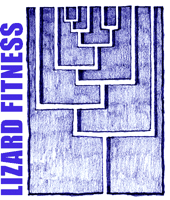Check out my profile on Research Gate and on Google Scholar or explore my full publication list below. Most papers are available online through the public repository at HAL CNRS
2025
Théo Bodineau; Pierre Villemereuil; Baptiste Lemaire; Simon Agostini; Beatriz Decencière; Matéo Millet; Sandrine Meylan; Jean-François Le Galliard
In: Functional Ecology, vol. n/a, no. n/a, 2025, ISSN: 1365-2435, (_eprint: https://onlinelibrary.wiley.com/doi/pdf/10.1111/1365-2435.70030).
Abstract | Links | BibTeX | Tags: ectotherm, food availability, nocturnal temperatures, performance, phenology, plasticity, reproductive costs, trade-off
@article{bodineau_multi-trait_2025,
title = {A multi-trait evaluation of patterns and fitness consequences of breeding phenology plasticity with nocturnal warming and food restriction in a lizard},
author = {Théo Bodineau and Pierre Villemereuil and Baptiste Lemaire and Simon Agostini and Beatriz Decencière and Matéo Millet and Sandrine Meylan and Jean-François Le Galliard},
url = {https://onlinelibrary.wiley.com/doi/abs/10.1111/1365-2435.70030},
doi = {10.1111/1365-2435.70030},
issn = {1365-2435},
year = {2025},
date = {2025-01-01},
urldate = {2025-03-20},
journal = {Functional Ecology},
volume = {n/a},
number = {n/a},
abstract = {Faced with climate warming, ectothermic species shift their breeding phenology, which is in part attributed to an acceleration of gestation or incubation in warmer environments. Thermal acceleration of gestation may have important fitness implications for breeding females and their offspring by impacting maternal homeostasis, embryonic development and hatching date, but these benefits and costs have been poorly documented. In addition, while climate change is characterised by a stronger trend for night-time than for daytime warming and concurrent alterations of food availability, few studies have quantified phenology-trait effects of increasing nocturnal temperatures and decreasing food intake. Here, we exposed female common lizards (Zootoca vivipara) to contrasted nocturnal temperatures and prey availability during gestation. We investigated multiple traits to quantify the functional impacts of nocturnal warming and food availability on breeding phenology, maternal condition, physiology and behaviour, current reproductive output and both females and offspring life-history traits. Nocturnal warming advanced parturition dates, but food restriction further accelerated gestation and females' muscle catabolism under moderate nocturnal warming. Nocturnal warming and food restriction during gestation had negative effects on reproductive output and increased physiological imbalances in breeding females. Hot nocturnal temperatures down-regulated basal corticosterone levels and immunocompetence, while food restriction reduced the antioxidant capacity of females. The thermal acceleration of gestation induced by nocturnal warming had positive effects on offspring life-history traits related to fitness, such as endurance at birth and body growth during the first few months of life. By analysing multiple traits, our study provides an integrated understanding of the intra- and intergenerational effects of nocturnal warming and resource availability during gestation in a viviparous ectotherm. Our results underline the importance of considering nocturnal warming and resource availability as factors causing increased physiological imbalances and negative effects on ectotherm reproduction. They also show the need to consider the benefits and costs of phenological advances for breeding females and their offspring in order to improve our understanding of the consequences of phenological changes in the context of climate change. Read the free Plain Language Summary for this article on the Journal blog.},
note = {_eprint: https://onlinelibrary.wiley.com/doi/pdf/10.1111/1365-2435.70030},
keywords = {ectotherm, food availability, nocturnal temperatures, performance, phenology, plasticity, reproductive costs, trade-off},
pubstate = {published},
tppubtype = {article}
}
2011
Joséfa Bleu; Jean-François Le Galliard; Sandrine Meylan; Manuel Massot; Patrick S Fitze
Mating does not influence reproductive investment in a viviparous lizard Journal Article
In: Journal of Experimental Zoology Part a-Ecological Genetics and Physiology, vol. 315A, no. 8, pp. 458–464, 2011, ISSN: 1932-5223.
Abstract | Links | BibTeX | Tags: life history, performance, squamate reptiles, thermal preferences, trade-off, Zootoca vivipara, Zootoca vivipara
@article{bleu_mating_2011,
title = {Mating does not influence reproductive investment in a viviparous lizard},
author = {Joséfa Bleu and Jean-François Le Galliard and Sandrine Meylan and Manuel Massot and Patrick S Fitze},
url = {https://onlinelibrary.wiley.com/doi/abs/10.1002/jez.693},
doi = {https://doi.org/10.1002/jez.693},
issn = {1932-5223},
year = {2011},
date = {2011-01-01},
journal = {Journal of Experimental Zoology Part a-Ecological Genetics and Physiology},
volume = {315A},
number = {8},
pages = {458--464},
abstract = {Mating is crucial for females that reproduce exclusively sexually and should influence their investment into reproduction. Although reproductive adjustments in response to mate quality have been tested in a wide range of species, the effect of exposure to males and mating per se has seldom been studied. Compensatory mechanisms against the absence of mating may evolve more frequently in viviparous females, which pay higher direct costs of reproduction, due to gestation, than oviparous females. To test the existence of such mechanisms in a viviparous species, we experimentally manipulated the mating opportunity of viviparous female lizard, Lacerta (Zootoca) vivipara. We assessed the effect of mating on ovulation, postpartum body condition and parturition date, as well as on changes in locomotor performances and body temperatures during the breeding cycle. Female lizards ovulated spontaneously and mating had no influence on litter size, locomotor impairment or on selected body temperature. However, offspring production induced a more pronounced locomotor impairment and physical burden than the production of undeveloped eggs. Postpartum body condition and parturition dates were not different among females. This result suggests that gestation length is not determined by an embryonic signal. In the common lizard, viviparity is not associated with facultative ovulation and a control of litter size after ovulation, in response to the absence of mating. J. Exp. Zool. 315:458-464, 2011. (C) 2011 Wiley-Liss, Inc.},
keywords = {life history, performance, squamate reptiles, thermal preferences, trade-off, Zootoca vivipara, Zootoca vivipara},
pubstate = {published},
tppubtype = {article}
}
